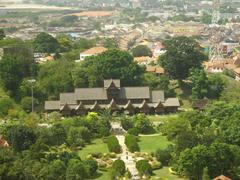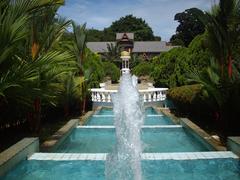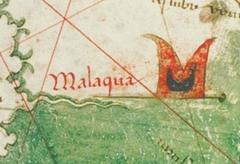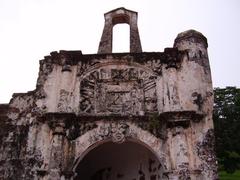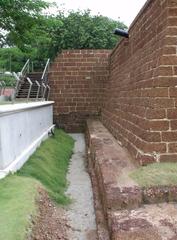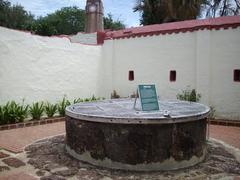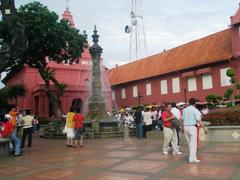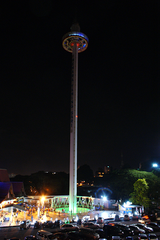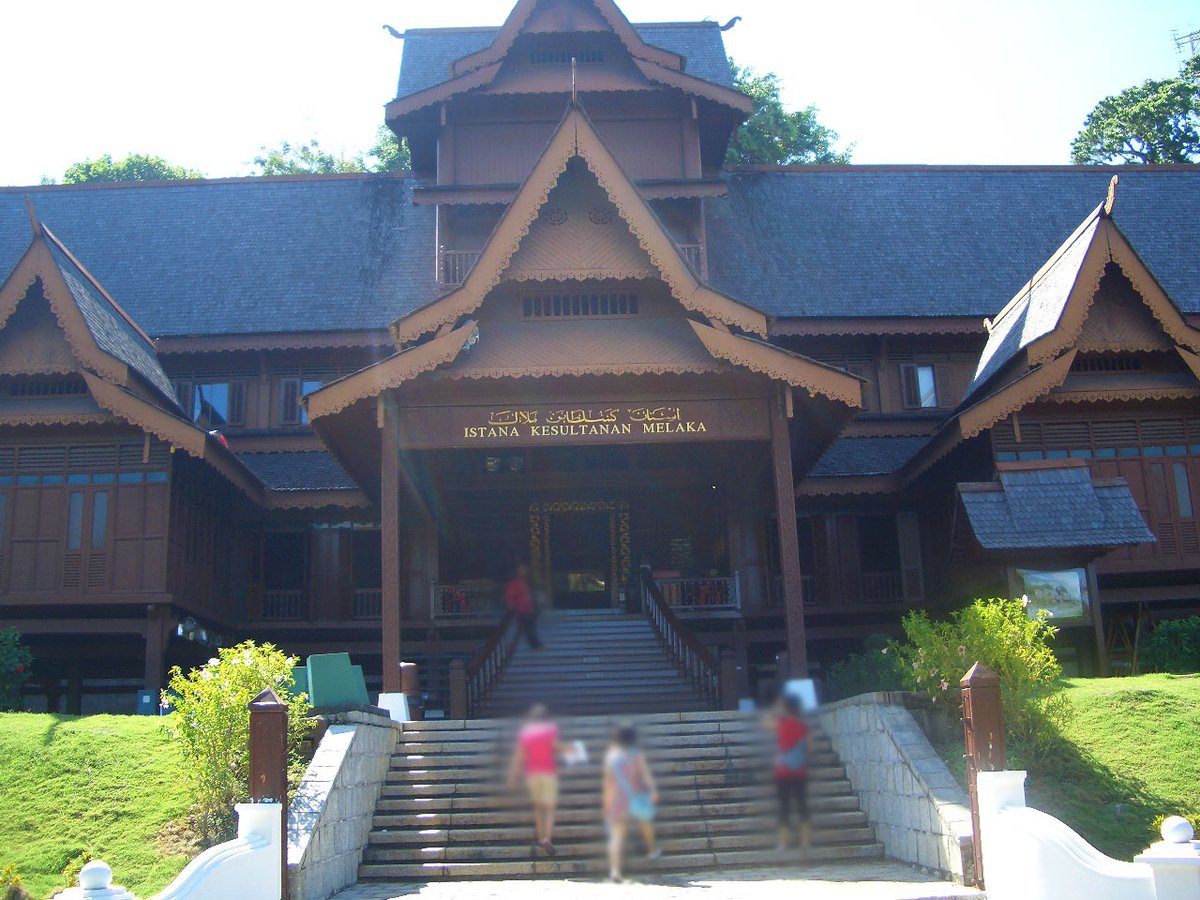
Visiting Guide to Jalan Istana in Tanjung Kling, Malaysia
Date: 20/07/2024
Introduction
Welcome to Jalan Istana, a historically rich and culturally vibrant destination in Tanjung Kling, Malaysia. This guide provides an in-depth look at the history, attractions, and practical information for visiting Jalan Istana, ensuring a memorable and enriching experience. Jalan Istana, located in the coastal town of Tanjung Kling in the state of Melaka, has a history that dates back to the early settlement periods and has been significantly influenced by various colonial powers, including the Portuguese, Dutch, and British (source). The area is renowned for its well-preserved colonial-era buildings, traditional Malay houses, and modern amenities, offering a unique blend of old and new. Visitors can explore historical landmarks, cultural attractions, and vibrant local markets that reflect the diverse heritage of Melaka. Whether you are a history enthusiast, a culture lover, or simply looking for a picturesque destination to explore, Jalan Istana has something to offer for everyone.
Table of Contents
- Introduction
- History of Jalan Istana
- Cultural Significance
- Visitor Information
- Nearby Attractions
- Preservation Efforts
- Modern-Day Attractions
- FAQ
- Conclusion
History of Jalan Istana
Early Settlement and Colonial Influence
Jalan Istana, located in Tanjung Kling, Malaysia, has a rich history that dates back to the early settlement periods. Tanjung Kling itself is a coastal town in the state of Melaka, which has been a significant port and trading hub since the 15th century. The area was initially inhabited by the indigenous Malay people, who were later joined by traders from China, India, and the Arab world. The strategic location of Melaka made it a focal point for maritime trade, which significantly influenced the development of Jalan Istana.
During the 16th century, the Portuguese colonized Melaka, marking the beginning of European influence in the region. The Portuguese constructed several fortifications and buildings, some of which influenced the architectural styles seen in Jalan Istana. The Portuguese rule was followed by the Dutch in the 17th century, who further developed the area, introducing new architectural and cultural elements. The Dutch East India Company (VOC) played a crucial role in the administration and development of Melaka, including the areas surrounding Jalan Istana.
British Colonial Era
The British took control of Melaka in the early 19th century, and their influence is evident in the infrastructure and urban planning of Jalan Istana. The British colonial administration focused on developing Melaka as a strategic military and trading post. They introduced modern amenities, including roads, railways, and public buildings, which significantly improved the connectivity and accessibility of Jalan Istana.
One of the notable landmarks from the British era is the Istana Melaka, a royal palace that served as the residence of the local sultan. The palace, located on Jalan Istana, is an architectural marvel that reflects the blend of Malay and colonial architectural styles. The British also established several educational institutions, churches, and administrative buildings in the vicinity, contributing to the area’s historical and cultural significance.
Post-Independence Development
After Malaysia gained independence in 1957, Jalan Istana continued to evolve, reflecting the country’s socio-economic development. The post-independence era saw significant investments in infrastructure and urban development, transforming Jalan Istana into a bustling thoroughfare. The Malaysian government focused on preserving the historical and cultural heritage of the area while promoting modern development.
In recent years, Jalan Istana has become a popular tourist destination, attracting visitors with its historical landmarks, cultural attractions, and vibrant local markets. The area is known for its well-preserved colonial-era buildings, traditional Malay houses, and modern amenities, offering a unique blend of old and new.
Cultural Significance
Jalan Istana holds immense cultural significance for the local community and visitors alike. The area is home to several cultural and religious landmarks, including mosques, temples, and churches, reflecting the diverse cultural heritage of Melaka. One of the prominent cultural landmarks is the Masjid Tanjung Kling, a historic mosque that dates back to the 18th century. The mosque is an architectural masterpiece, featuring traditional Malay and Islamic design elements.
The local markets and street vendors along Jalan Istana offer a glimpse into the vibrant culture and traditions of the area. Visitors can explore a variety of local crafts, textiles, and culinary delights, experiencing the rich cultural tapestry of Tanjung Kling. The area also hosts several cultural festivals and events throughout the year, celebrating the diverse heritage of the local community.
Visitor Information
Visiting Hours and Tickets
Jalan Istana is accessible to visitors throughout the year. Specific attractions within the area, such as the Istana Melaka museum, may have their own visiting hours and ticket requirements. It is advisable to check the official websites or contact the local tourism office for the most up-to-date information on visiting hours and ticket prices.
Travel Tips
- Best Time to Visit: The best time to visit Jalan Istana is during the cooler months from November to February.
- Getting There: Tanjung Kling is well-connected by road and public transport. Visitors can take a bus or taxi from Melaka city center.
- Accommodation: There are several hotels and guesthouses in and around Tanjung Kling, catering to various budgets.
Nearby Attractions
Melaka Sultanate Palace Museum
A replica of the 15th-century palace, offering insights into Melaka’s history and culture.
A Famosa
The remains of a Portuguese fortress, one of the oldest surviving European architectural remains in Southeast Asia.
St. Paul’s Hill
A historic site with panoramic views of Melaka, featuring the ruins of St. Paul’s Church.
Preservation Efforts
The preservation of historical and cultural landmarks along Jalan Istana has been a priority for the local authorities and heritage organizations. Several initiatives have been undertaken to restore and maintain the colonial-era buildings, traditional houses, and cultural landmarks. The Melaka State Government, in collaboration with heritage organizations, has implemented conservation programs to protect the architectural and cultural heritage of Jalan Istana.
One of the notable preservation efforts is the restoration of the Istana Melaka, which has been transformed into a museum showcasing the history and culture of Melaka. The museum offers visitors an opportunity to explore the royal heritage of the area, with exhibits featuring artifacts, photographs, and historical documents. The preservation of the mosque, temples, and other cultural landmarks has also been a focus, ensuring that the rich heritage of Jalan Istana is preserved for future generations.
Modern-Day Attractions
Today, Jalan Istana is a vibrant and bustling area that offers a unique blend of historical and modern attractions. Visitors can explore the well-preserved colonial-era buildings, traditional Malay houses, and modern amenities, experiencing the rich history and culture of the area. The local markets and street vendors offer a variety of local crafts, textiles, and culinary delights, providing a glimpse into the vibrant culture of Tanjung Kling.
The area is also home to several modern attractions, including shopping malls, restaurants, and entertainment venues, catering to the diverse interests of visitors. The blend of historical and modern attractions makes Jalan Istana a must-visit destination for tourists exploring Melaka.
FAQ
- What are the visiting hours for Jalan Istana? Visiting hours vary by attraction; check official websites for details.
- Are there guided tours available at Jalan Istana? Yes, guided tours are available through local tour operators.
- How much are the tickets for Istana Melaka? Ticket prices vary; check the museum’s official website for current rates.
- What are the nearby attractions to visit? Nearby attractions include Melaka Sultanate Palace Museum, A Famosa, and St. Paul’s Hill.
Conclusion
Jalan Istana in Tanjung Kling, Malaysia, stands as a testament to the rich historical and cultural heritage of Melaka. From its early settlement days to the influences of various colonial powers, the area has evolved into a vibrant tourist destination that offers a unique blend of historical landmarks, cultural attractions, and modern amenities. The preservation efforts by local authorities and heritage organizations have ensured that the rich heritage of Jalan Istana is maintained for future generations. Visitors can explore the well-preserved colonial-era buildings, traditional Malay houses, and modern attractions, experiencing the rich history and culture of the area.
For more information and to plan your visit, check out Malaysia’s official tourism website.

